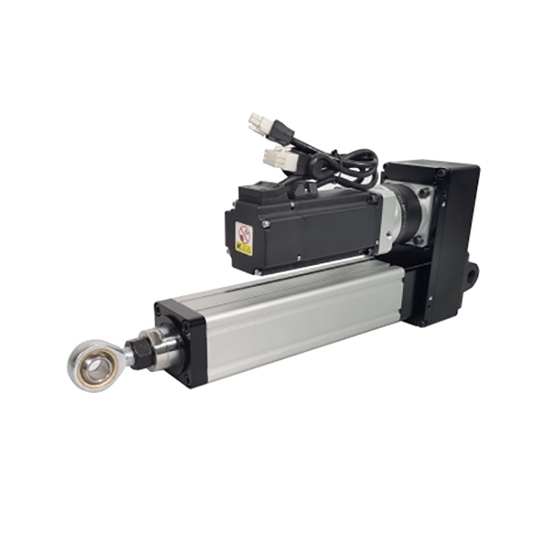What are the Applications of Linear Servo Motor?
A linear servo motor changes the rotational motion of a motor into a straight line. Conventional electric motors move in a circle, while linear actuators move forward and backward. The push and pull action allows the device to slide, tip, and lift items with the push of a button. The design provides operators accurate and precise control over the production. The fluid movement means the linear actuator requires minimal maintenance over its lifespan and comes with natural energy efficiency. They are easier to install than their hydraulic or pneumatic counterparts, cost less, and take up significantly less room.
Linear servo actuators offer a cost-effective solution to move loads in a straight line. The device comes in multiple forms, ranging from telescoping to twisted and coiled. You may be wondering, "What are the uses for a linear actuator?" Here are nine of the most common uses for a high speed linear servo motor to help you make the most of this invaluable tool.

Applications of linear servo motor
- Material Handling:
The many uses for a linear servo motor have improved automation in the workplace. It streamlines manufacturing while lowering the cost of production. The electric linear servo actuators have transformed into a vital and necessary tool to achieve optimal material handling. Linear actuators enable safe, secure, and precise motion, primarily when operators use them in conjunction with sensors or other smart technologies. The combination allows workers to complete previously repetitive tasks with minimal manual intervention. - Robotics:
Linear servo motors make movement possible in robots. They allow robotic machinery to interact with its environment through wheels, clamps, arms, and legs. - Food and Beverage Manufacturing:
The industrial-scale of today's food and beverage industry requires high levels of automation to meet demand. Manufacturers must streamline processing, treatment, packaging, and other processes to ensure timely distribution. Linear actuators play a crucial role in making these actions possible. - Window Automation:
Adjusting a window at ground level is straightforward but can be extremely difficult when it's out of reach. The solution: linear actuators. They offer a practical solution that lets people easily open and close windows and enjoy the comforts of modern living. - Agricultural Machinery:
Modern agricultural machinery has never been more reliable, in part, because of linear servo actuators. The devices assist farmers, workers, and other laborers in completing various agricultural tasks, on top of withstanding harsh weather conditions and exposure to herbicides, pesticides, and fertilizers. Ground zero for linear actuators is in the fields. They give operators control for the height and angle of sprayers for thorough and consistent coverage. Actuators can aid in opening and closing hatches while simplifying the mechanisms to operate machinery. - Solar Panel Operation:
The push for alternative energy sources has coincided with an uptick in solar panel usage. Conventional panels use hydraulics or other similar devices, but recent innovations have made harnessing the sun's power more efficient. Electric linear actuators give panels the ability to track the sun, moving with the sunlight to maximize the amount of direct absorption. - Cutting Equipment:
Machines spare humans from as much danger as possible when cutting. They take over repetitive tasks or risky assignments that require more endurance and power than creative prowess. Linear actuators power these machines to ensure accurate cuts with every slice. - Valve Operation:
Today's industry would not be possible without linear valve actuators turning electric, pneumatic, and hydraulic energy into a push and pull motion. The cost-effective product offers an attractive alternative to manual operation. It operates with a range of rising stem valves with optional features for integrated control. - Non-Industrial Applications:
The most common uses for a linear servo actuator lie in industrial automation, but those are far from the only applications. The device has become increasingly popular in residential settings where counterparts, like hydraulic and pneumatic actuators, are not feasible. Many people use linear actuators for automation as a way to create more space in a compact home. - The Bottom Line:
Linear servo actuators are an essential part of day-to-day life, whether you want to prop open your windows or simplify agricultural labor. The simple yet effective mechanics allows operators to transform manual functions into automated ones. The wide range of linear actuator uses makes it a must-have device, regardless of industry.
ATO offers optional rated power from 400W to 5.5kW to meet your needs. Connecting customers with the leading linear motion control products they need. Check out our catalogs to learn more about how ATO can assist you.

